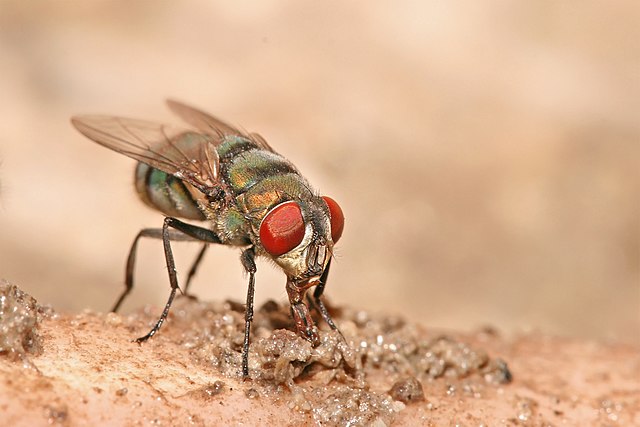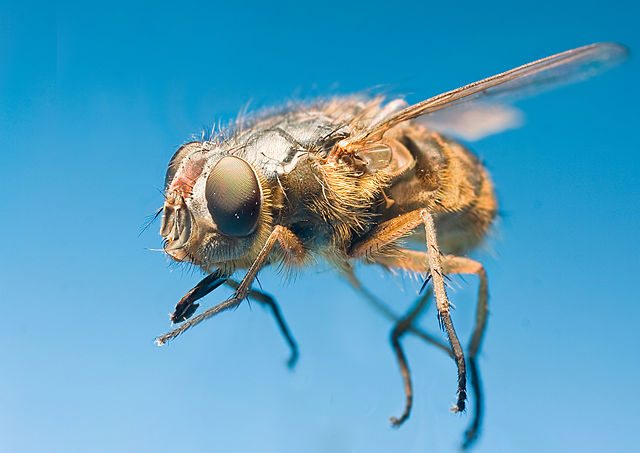Chrysomya is an Old World blow fly genus of the family Calliphoridae. The genus Chrysomya contains a number of species including Chrysomya rufifacies and Chrysomya megacephala. The term “Old World blow fly” is a derivative of both the associated family, Calliphoridae, and the belief that the genus Chrysomya originated in Asia and migrated to North America only relatively recently. Chrysomya’s primary importance to the field of medico-criminal forensic entomology is due to the genus’ reliable life cycle, allowing investigators to accurately develop a postmortem interval. Chrysomya adults are typically metallic colored with thick setae on the meron and plumose arista. The name comes from the word chrysos, meaning “golden” in reference to the metallic sheen of the genus’ species, and -mya, a derivation from the word myia, meaning “fly”.
Chrysomya
Chrysomya usually have blue/green metallic bodies
A Chrysomya rufifacies larva
A female Chrysomya megacephala feeding on feces
The Calliphoridae are a family of insects in the order Diptera, with almost 1,900 known species. The maggot larvae, often used as fishing bait, are known as gentles. The family is known to be polyphyletic, but much remains disputed regarding proper treatment of the constituent taxa, some of which are occasionally accorded family status.
Calliphoridae
Close-up of the head of Calliphora vomitoria
A Calliphora livida fly specimen
Calliphora hilli








